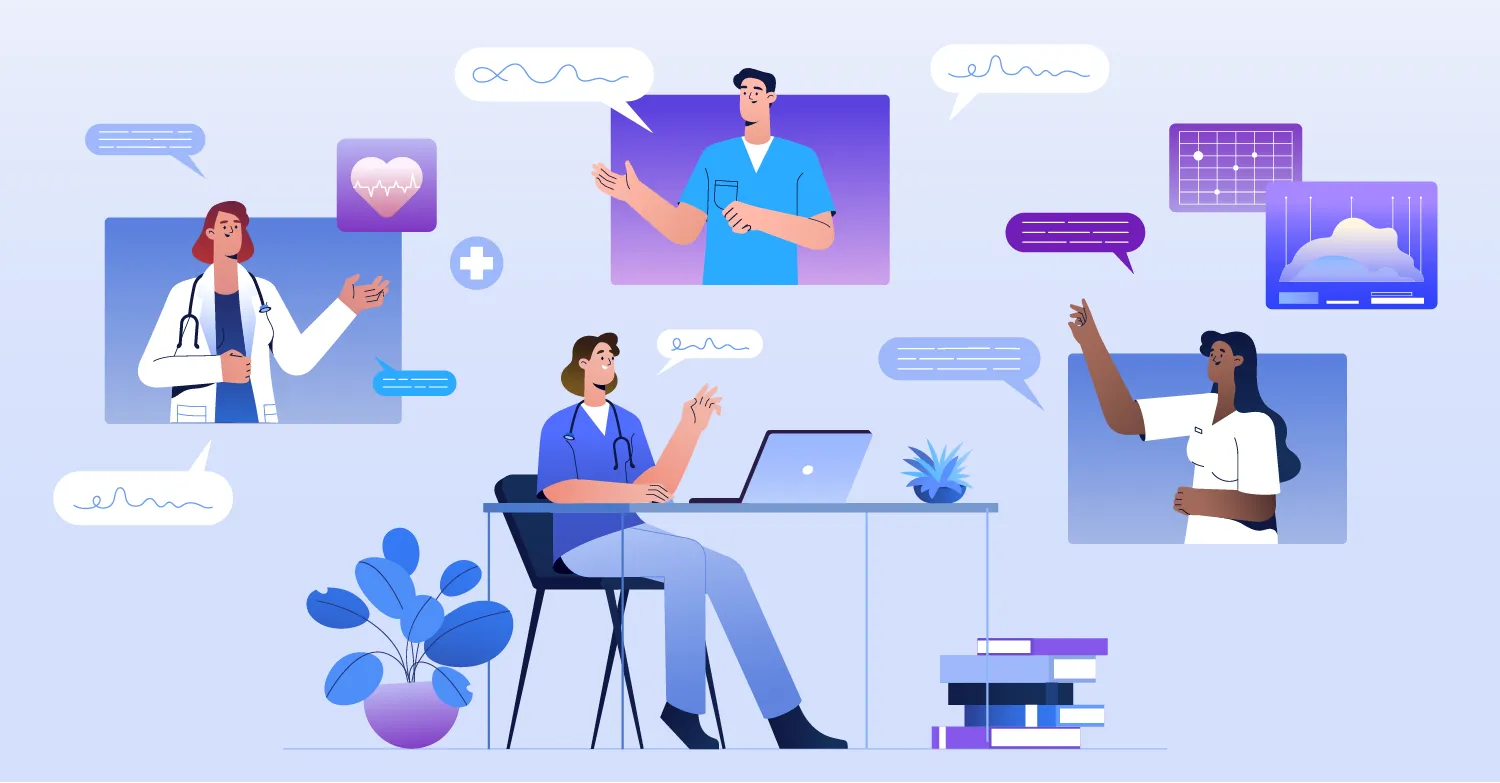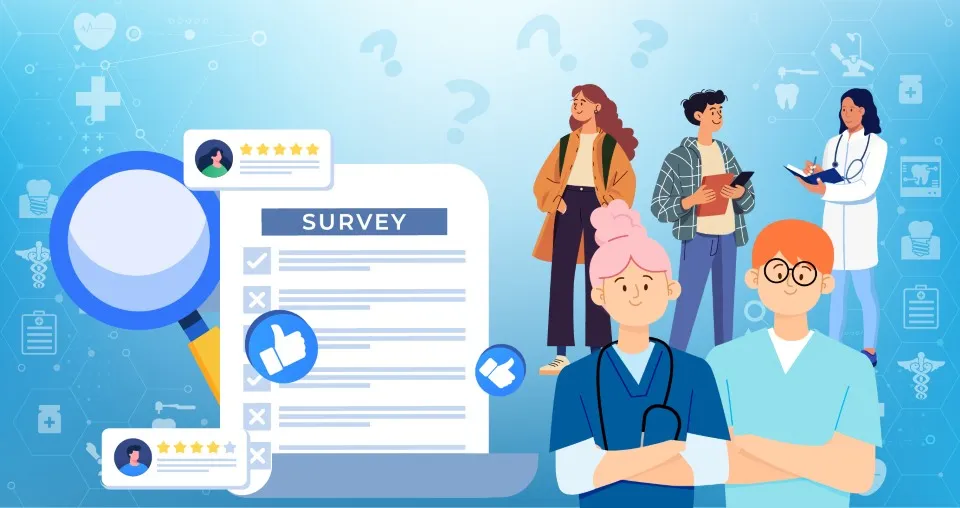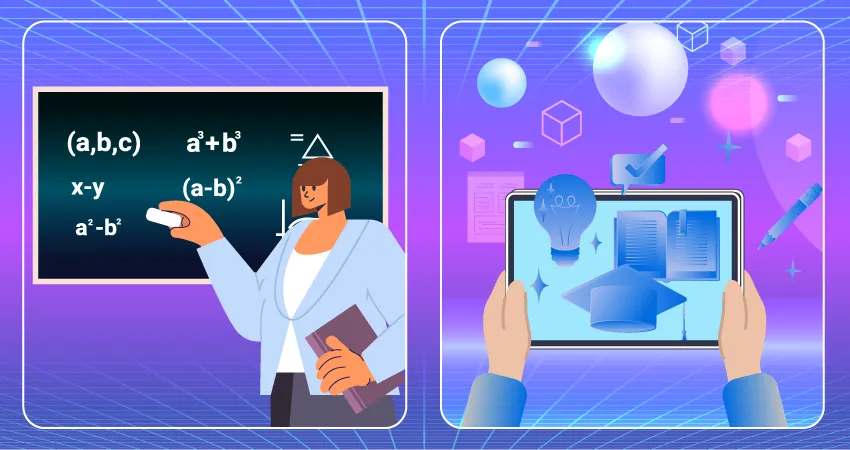Education Leaders: Why the Flipped Classroom Model Is a High-Impact Teaching Strategy for Value-Focused Institutions

The phrase 'high-impact teaching strategies' can mean different things in different settings. For higher education leaders, though, impact comes in two forms: demonstrably improving student performance and clearly boosting perceived program value. Read on to discover why flipped learning offers both.
Higher education is under mounting scrutiny from students, parents, policymakers, and the broader public.
A 2024 Inside Higher Ed survey of U.S. university presidents found that 66% are concerned about waning public confidence in higher education, with affordability cited as the number one cause. In fact, over a third (36%) blamed concerns about cost as the cause of that lost confidence, and 57% said they believe the public's cost-related concerns are highly valid.
While healthcare degrees in fields like dentistry and nursing have traditionally been seen as prestigious and professionally rewarding (in other words: worth the money), perceptions of a degree’s value equally apply to how institutions justify the immediate, up-front expense of higher education. This is especially true of dental programs. In fact, as a 2025 article in the Journal of Dental Education points out, dental education is now reaching a price that leaves it out of reach for many prospective students.
This tension comes hand-in-hand with several implications. In a recent article on Immersify's student survey results, we pointed to a heightened need for institutions to meet student expectations around the learning technologies they use. But as the cost of a dental education rises, the way that education is delivered becomes just as important a factor in conveying how valuable and worthwhile your program is. After all, a growing lack of confidence in higher ed means that even institutions offering degrees with high earning potential are at risk of being asked: Are students getting their money’s worth?
There's a compelling institutional response to this question: flipping the classroom. A flipped classroom, meaning an approach that pairs pre-class content with targeted in-person instruction, has plenty to commend itself in terms of learning outcomes, but (crucially) the model also stands to increase and convey the perceived value of healthcare programs. When learners walk away from class having applied their skills, received tailored support, and explored the nuances of their subject (rather than simply listened to a lecture), teaching feels both more effective and, crucially, worth the ticket price.
Read on to discover:
- What the flipped classroom model entails
- The institutional pressures pointing to a need for flexible, value-forward pedagogies
- Why healthcare-oriented institutions are especially well-positioned to benefit from flipped classrooms that build clinical readiness
 What Is the Flipped Classroom Model? FTC as a High-Impact Teaching Strategy
What Is the Flipped Classroom Model? FTC as a High-Impact Teaching Strategy
Flipped learning inverts the traditional structure of higher education delivery. Instead of reserving class time for delivering key information, it places that information within pre-class work instead. Students are given materials about an upcoming topic ahead of time, freeing up in-person sessions for more active, involved approaches like:
- Discussion
- Analysis
- Application
- Collaboration
This modern learning method comes with its fair share of pedagogical benefits. But for institutional leaders looking to highlight the value of their courses, the more immediate question is: do students associate flipped classrooms with a more rewarding and worthwhile learning experience?
A growing body of evidence suggests that they absolutely do. A 2023 study published in BMC Medical Education found that students held positive opinions toward the flipped classroom across a number of criteria: increased classroom participation, higher motivation levels, and strong interpersonal interactions.
Crucially, the authors found that more than 90% of students reported increased motivation, attributing this to the opportunity for:
- Richer in-person interactions
- Higher engagement
- The chance to better meet learning targets
While baseline test scores remained consistent, students’ attitudes and perceptions of educational quality improved.
Given the public’s waning confidence in the value and affordability of higher education, findings like this matter. When students (and their families) assess whether they’re ‘getting their money’s worth,’ they’re likely thinking about teaching quality, individual attention and support, and the sense of active preparation that goes into their program.
And while the BMC study highlights the flipped classroom’s impact on in-class activity, the model equally suggests value by promoting more freedom to learn outside a set schedule. A 2024 Gallup study highlights that this is another core form of value for students: 70% of unenrolled Americans said a lack of flexible or remote learning options played a role in their decision not to pursue further education.
In practice, this means flipped learning increases perceived value on two fronts at once. By delivering core content asynchronously and reserving live time for high impact teaching strategies, institutions simultaneously preserve the richness of in-person teaching while offering learners the flexibility they've increasingly come to expect as part of their education.
DIVE INTO THE DATA ON FLIPPED LEARNING | '5 Benefits of Flipped Learning for Universities and Colleges'
Frequently Asked Questions
It’s a pedagogical approach that shifts foundational content delivery (such as lectures) to pre-class work, often via asynchronous materials. This allows institutions to reserve classroom time for active learning, clinical reasoning, or collaborative engagement, allowing students to apply knowledge and discuss areas of difficulty or interest.
For another example of a future-ready learning model, take a look at 'Competency Over Completion: Why Competency-Based Education is Reshaping Healthcare Learning'
Flipped learning enhances in-person instruction (rather than replacing it). The model uses digital content to prepare students in advance, ensuring that in-person time is more targeted, applied, and valuable.
For more, see 'Embracing Digital Transformation in Healthcare Education Without Replacing Traditional Teaching'
Flipped delivery allows institutions to address challenges like limited clinical exposure and rising student expectations by creating more space for tailored, nuanced, and practice-based learning. Crucially, this also helps institutions to demonstrate the value their students gain through in-person teaching time.
Flipped learning is widely considered an innovative classroom model. Why? Because it replaces lecture-based sessions with interactive, discussion-based, tailored, or even applied learning. By moving core content online, to be completed before classes begin, in-person instruction becomes a space for discussion, practice, and clinical application: all hallmarks of innovative classrooms.
Yes. According to a meta-analysis of 198 studies across education levels, flipped learning has been shown to result in a half-grade improvement for many students: a clear sign of impact in action. A separate study from BMC Medical Education found over 90% of students exposed to flipped classroom methods reported higher satisfaction levels, suggesting flipped learning is high-impact in terms of learning outcomes and perceived program value.
Why Flipping the Classroom Is a High-Impact Teaching Strategy
One of the clearest ways students assess the value of their degree is through the quality and relevance of their in-person instruction. That's especially true of fields like dentistry and nursing, where hands-on experience is critical. But in many programs, real clinical exposure is limited. As a result, students may graduate feeling underprepared, which, in turn, may lead them to question whether their tuition has delivered tangible, job-ready skills.
Graduate preparedness is certainly a recognized problem in dentistry. A 2024 article in BMC Medical Education identified a number of recurring concerns in global dental education, including:
- Inadequate foundational knowledge
- Limited exposure to specialized patient groups
- Insufficient clinical experience to prepare students for independent practice
This struggle to gain sufficient hands-on experience can only sharpen questions around students' return on investment, placing real pressure on institutions to extract maximum value from every learning environment.
This is where the flipped classroom comes into its own: as a way to realize that value. By using face-to-face time for applied learning, discussion-based clinical reasoning, or scaffolded skill rehearsal, institutions can help healthcare students derive more benefits from the placement opportunities they do receive. Or, to put it another way: flipped learning prepares students to make their clinical exposure count. This high impact teaching strategy boosts both confidence and competence when it matters most, priming learners to extract more value (and, importantly, to perceive that value) from the limited time they’re able to spend in clinical environments.
And while much of flipped learning's value lies in how it supports clinical preparedness, it’s important to note that the model is also associated with stronger academic performance. A 2020 meta-analysis in Educational Research Review found that flipping the classroom has a ‘moderate, positive effect on student performance,’ equivalent to around half a standard deviation improvement. As the authors note, that’s enough to move many students into a higher grade band. And, in fact, more recent research in a dental context points to even stronger findings: a 2025 study published in the Journal of Dental Education found that students in its flipped learning group were 2.46 times more likely to perform an extraction unaided when compared to a control group.
Combined with the BMC Medical Education study mentioned above, which attributes gains in student interest and satisfaction to flipping the classroom, there's rich evidence pointing to flipped learning as a high-impact teaching strategy, both in terms of its measurable gains in student outcomes and, crucially, its ability to improve perceived program value by way of higher satisfaction levels.
At a time when clinical exposure is scarce and cost concerns are high, flipping the classroom is a much-needed means of reallocating teaching time where it stands to do the most good. And it achieves this while simultaneously demonstrating to students and stakeholders alike that your institution is making that time count in ways that convey the value of educators' expertise and accentuate the benefits of that all-important clinic time.
HEAR ADA AND ADHA LEADERS' THOUGHTS ON FLIPPED CLASSROOMS | '5 Key Takeaways from "Beyond the Buzzword: Rethinking Technology as a Catalyst for Curriculum Transformation"'
 Implementing the Flipped Classroom Model
Implementing the Flipped Classroom Model
For many institutions, the biggest barrier to adopting new pedagogical models isn’t necessarily doubt about their effectiveness so much as concerns about the practicalities of implementation. But in practice, adopting a flipped classroom approach doesn’t have to mean reinventing your curriculum from the ground up. In fact, it's best understood as a means of enhancing and complementing current program structures, and it certainly doesn't require busy educators to pull swathes of extra material from thin air in support of a new-found need for pre-work.
Instead, a smooth introduction to flipped learning is best achieved through purpose-built platforms. The right platform will come equipped with pre-made content that's already mapped to existing curricula, reducing rollout down to a simple QR code to be distributed to students prior to class.
For institutional leaders looking to demonstrate responsiveness to stakeholder concerns, whether around value for money, clinical readiness, or student satisfaction, flipped models offer a way to overtly, tangibly demonstrate course value and improve outcomes without demanding a wholesale overhaul.
In a nutshell: flipped classrooms aren't a fringe experiment or a pipe dream. In fact, with the right tools behind you, the model offers a straightforward way to bolster student engagement while accentuating the value and worth at the core of your course.
GET HANDS-ON WITH INTEGRATION STRATEGIES | ‘Fitting the Pieces Together: 3 Easy Ways to Embed Pre-Mapped Learning Technology into Core Modules’ | 'How to Flip Your Classroom With Immersify: Embracing Flipped Education in 5 Simple Steps'
3 Key Takeaways on the Benefits of Flipped Classrooms
- Flipped classrooms support perceptions of value by enhancing live teaching, promoting flexibility, and aligning with evolving learner expectations.
- Flipping the classroom helps offset limited clinical exposure by preparing students to extract more from hands-on experiences (and improves academic outcomes in the process).
- The flipped classroom model can be introduced through digital platforms that come equipped with pre-made resources mapped to your curriculum, allowing you to take full advantage of the approach without imposing on educator workloads.
Also in the EdTech Trends series:
Read MoreDiscover How Immersify Supports Strategic Innovation Without the Friction
Our team works with institutions to implement flipped delivery via expert-authored, high-quality learning materials, all mapped to your existing curriculum and easily shareable via QR codes.
Reach out today to discover how Immersify can shine a light on the value of your institution’s program and pedagogy.
Editor's note: this piece was updated in October 2025 to incorporate further research on flipped classrooms.
This article was reviewed for clinical accuracy and educational relevance by Dr. Martin Ling, a GDC-registered dentist and Fellow of the Higher Education Academy.
Join our mailing list
Get the latest updates on immersive learning, industry trends, and resources delivered straight to your inbox.



